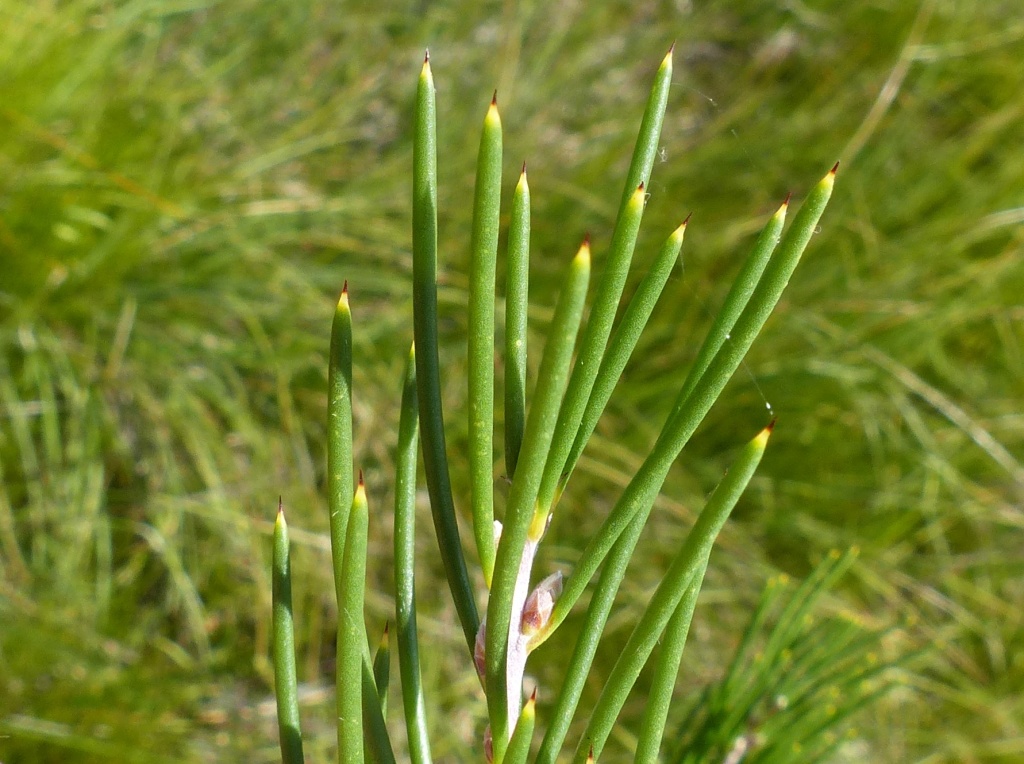Hakea lissosperma
R.Br. Mountain NeedlewoodUsually a narrowly pyramidal shrub 1–5 m high; branchlets appressed shining-pubescent when young. Leaves narrowly to widely spreading, terete, 5–8(–13) cm long, 1.1–1.6 mm wide, not grooved, appressed shining-pubescent when young; apex straight. Inflorescence 6–8-flowered; rachis knob-like, densely white-tomentose; pedicel 3.5–5.5 mm long, with appressed white hairs; perianth 3.5–6 mm long, white or cream, sometimes sparsely pubescent; pistil 8–10.5 mm long; pollen presenter an oblique disc. Fruit obliquely ellipsoid, 2.3–2.7 cm long, 1.7–2 cm wide, coarsely rugose or tuberculate; beak transverse; horns obscure; seed not occupying whole valve face, 15–16.5 mm long, 6–7 mm broad; wing only partly down one side of seed-body, black or dark brown. Flowers mostly Oct.–Dec.
EGL, EGU, HSF, HNF, MonT, VAlp. Also NSW, ACT, Tas. Scattered in rocky, high-subalpine to alpine areas (e.g. Mt Buffalo, Snowy Range, Mt Hotham area, the Cobberas), but locally common.
A species variable in habit, leaf thickness and flexibility and rarely, hair covering. Much of this variability seems related to habitat and exposure of the site. An isolated occurrence of a single plant of Hakea lissosperma from near Goongerah, East Gippsland, was previously referred to H. macraeana. This plant is atypical in its weeping habit and narrow, flexible leaves, and in its dry forest habitat at the relatively low altitude of 700 m. It is distinguished from H. macraeana by the absence of a groove on the lower leaf surface.
Barker, R.M.; Barker, W.R.; Haegi, L. (1996). Hakea. In: Walsh, N.G.; Entwisle, T.J., Flora of Victoria Vol. 3, Dicotyledons Winteraceae to Myrtaceae, pp. 870–882. Inkata Press, Melbourne.
 Spinning
Spinning

